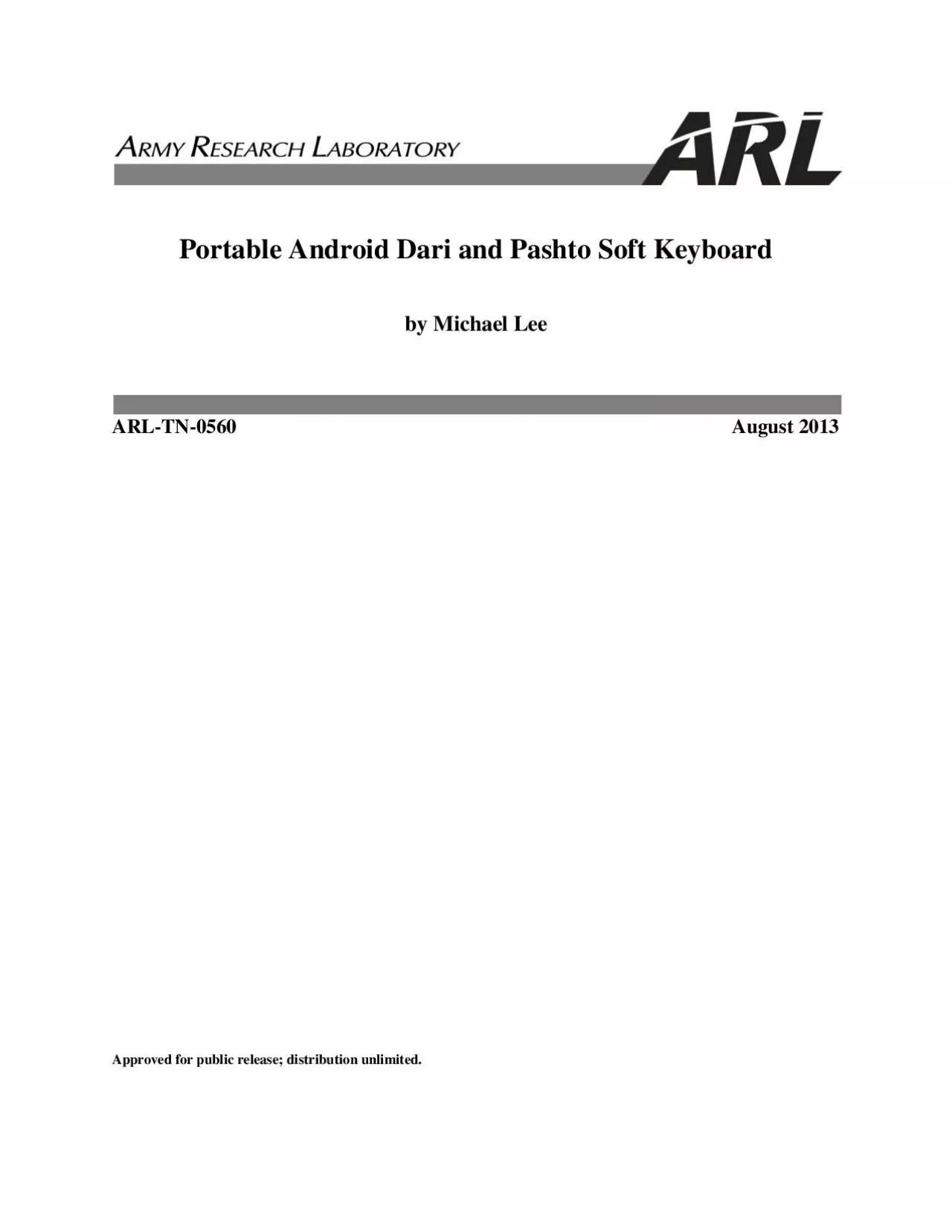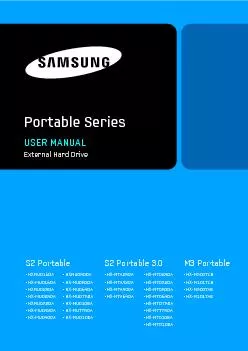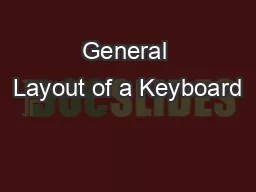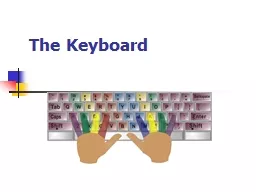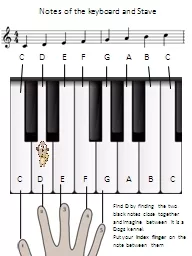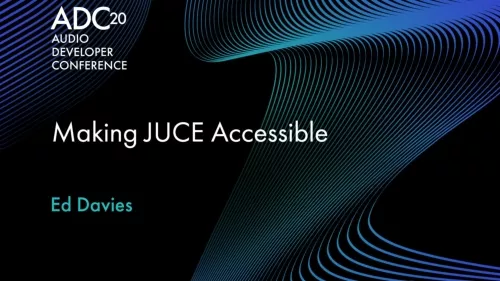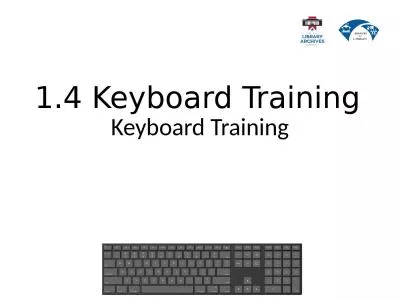PDF-Portable Android Dari and Pashto Soft Keyboard
Author : fauna | Published Date : 2021-06-26
by Michael Lee ARL T N 0560 August 2013 Approved for public release distribution unlimited NOTICES Disclaimers The findings in this report are not to be construed
Presentation Embed Code
Download Presentation
Download Presentation The PPT/PDF document "Portable Android Dari and Pashto Soft Ke..." is the property of its rightful owner. Permission is granted to download and print the materials on this website for personal, non-commercial use only, and to display it on your personal computer provided you do not modify the materials and that you retain all copyright notices contained in the materials. By downloading content from our website, you accept the terms of this agreement.
Portable Android Dari and Pashto Soft Keyboard: Transcript
Download Rules Of Document
"Portable Android Dari and Pashto Soft Keyboard"The content belongs to its owner. You may download and print it for personal use, without modification, and keep all copyright notices. By downloading, you agree to these terms.
Related Documents

